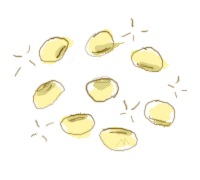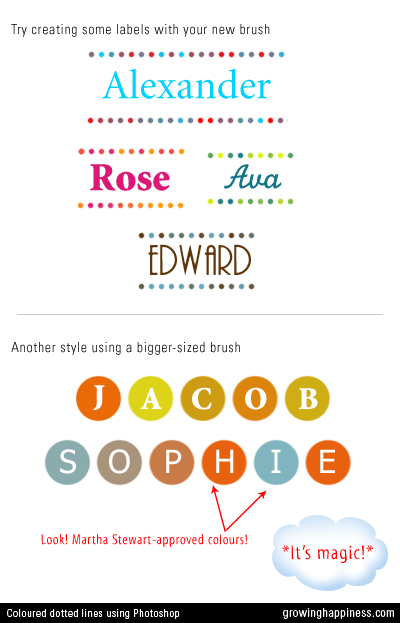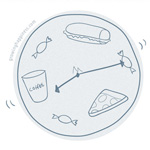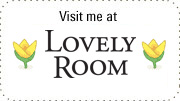NaBloPoMo- The Last List for March

Today is the 31st and final day of NaBloPoMo March 2008. Though I have been blogging here everyday this month, I kinda lost focus in the third week due to my work commitments.
What this experience taught me:
- It is good to have a plan, but don’t be blue if you can’t follow it through. My daily themed posts worked. For awhile.
- If you’re in the middle of a project that needs to be completed by mid-April, signing up for NaBloPoMo in March is not the wisest thing to do.
- Despite the lure of “Letters“, I will not give in to temptation. (see point 2)
- There are so many of fun, witty blogs just waiting to be discovered.
For those committing to April’s theme — all the best! I will try to find time to check your all blogs out!

The Best Cure for Hiccups
The Secret to Stopping Hiccups Lies in Warm Water
When I was younger my mother told me that the only way to cure hiccups or hiccoughs is to drink water. I’ve tried this many, many times with inconsistent results. I’ve also tried many other methods of stopping hiccups like holding my breath, pulling my ears, pinching my nose, drinking honey and getting tickled (made me feel worse). That was until B told me that the best cure for hiccups does indeed lie in drinking water but not just any water — it has to be warm.

I was a bit skeptical at first that just by simply drinking warm water alone can actually help to stop hiccups. The solution was way too simple, but his reasoning made sense — hiccups are caused by the spasming of the diaphragm (spelled wrongly as diapragm in the illustration, I know), a sheet of muscle located across the bottom the ribcage. And what do you do when a you get a muscle cramp? You apply heat. Does this warm water method really stop hiccups? You bet. It works like a charm for me every time. The hiccups will resolve in less than a minute (usually about 15 seconds). If it doesn’t work for you, what you’re drinking probably isn’t warm enough, try something warmer.
The first time I tried it, I was very surprised that it worked so fast. B was more amused that I didn’t know about this method before because he had assumed that everyone else knew it! That was about 6 years ago. For the past 6 years, each time someone else has the hicks, I tell him/her to drink warm water. And each time, they’d be surprised at how effective my method is (my method because I marketed it aggressively. ;) LOL). It then occurred to me that every one else in the world may have never heard of this very simple and effective remedy to hiccups. This must change!
So I now present you, The World, the only tried, tested and confirmed way to stop hiccups that you ever need to know – WARM WATER.
You read it here first — Try it yourself, tell your friends, spread the word.
Some other methods on how to stop hiccups are listed below. You may want to try at your own risk (a.k.a. MYTHS!?)
Other Hiccups Remedy, Tips, Tricks And Techniques
- Cure Hiccups at About.com (Video)
- 12 second Cure for Hiccups at Opiniorama
- 13 Techniques to Cure Hiccups at Howstuffworks.
![]()
Thank you for your comments and suggestions, dear readers!
You might also be interested in reading Escalating Hiccup – Stretching and Other Tried and Tested Ways to Stop Hiccups where I try some of your suggested methods to stop hiccups!
![]()
Ants in My Pants
I was out all day today.
 In the morning, while waiting for a cab at a very crowded area, I felt a tingling sensation running up my legs. After awhile I realised I had my feet just an inch away from a mound of large, red ants and, predictably, a few had crawled up my feet! I started stamping about like a mad person in the middle of the crowd. Amazingly, I managed to shake every last one of the angry looking ants without getting a single bite! I did however, squash one particularly big one to its death. I’m so sorry ant, it was a reflex reaction.
In the morning, while waiting for a cab at a very crowded area, I felt a tingling sensation running up my legs. After awhile I realised I had my feet just an inch away from a mound of large, red ants and, predictably, a few had crawled up my feet! I started stamping about like a mad person in the middle of the crowd. Amazingly, I managed to shake every last one of the angry looking ants without getting a single bite! I did however, squash one particularly big one to its death. I’m so sorry ant, it was a reflex reaction.
The rest of the day went by quite uneventfully until the time I had to go home.  I was happily hippity-hoppity-hopping way down a long stairway when I decided to skip a few steps. This proved to be a good move as I would have plunged my feet straight into a colony of big-headed ants otherwise. What are the odds of my narrowly missing stepping on an ants’ nest twice in a day!? Counting my blessings, I continued walking down the flight of stairs with trepidation.
I was happily hippity-hoppity-hopping way down a long stairway when I decided to skip a few steps. This proved to be a good move as I would have plunged my feet straight into a colony of big-headed ants otherwise. What are the odds of my narrowly missing stepping on an ants’ nest twice in a day!? Counting my blessings, I continued walking down the flight of stairs with trepidation.
A few minutes later, I was waiting for the traffic light to turn green when I thought I felt something crawling on my feet again. Obviously after two encounters with different groups of ants, I was extra sensitive today but what I wasn’t prepared for was the fact that I had my feet, once again dotted with ants — this time fast-moving orange (red? yellow? crazy?) ants. And once again I had to do my crazy dance to get rid of all of them. After moving away a safe distance, I noticed that I was standing just a mere inch away from a very bustling ant highway, 3 inches wide. An inch away! Again! The third time today! Thankfully, I didn’t get bitten at all! Phew!
Obviously after two encounters with different groups of ants, I was extra sensitive today but what I wasn’t prepared for was the fact that I had my feet, once again dotted with ants — this time fast-moving orange (red? yellow? crazy?) ants. And once again I had to do my crazy dance to get rid of all of them. After moving away a safe distance, I noticed that I was standing just a mere inch away from a very bustling ant highway, 3 inches wide. An inch away! Again! The third time today! Thankfully, I didn’t get bitten at all! Phew!
Too much ant drama for one day.
Idea Killers – 3 Ways to Stifle A Great Idea
Ideas are like seeds. They have the potential to grow into a bountiful harvest . But it takes a lot of patience and hard work before you can achieve this. Here are some of the things that might be counterproductive to the growth of a great idea:
- Not giving your idea a chance to grow
You have with you a handful of magic beans, which have the potential to yield 10 times more than those already available in the market. You are excited about the prospects but then you stop and start to question yourself : Will this really work?Am I wasting my time on an unproven product?

Idea killers come in many forms but do you know who is usually responsible for destroying most of your ideas? You. We are usually our worst critic. We are extra hard on ourselves because we are afraid to fail. But look at it this way — if you don’t even start something, you have already failed at your shot of success. When you go to a funfair, you gamble a few dollars at the coconut shy for a chance to win a big teddy bear. Why not give your idea a chance to develop? The pay-off could be much, much bigger than a silly teddy bear.
Take a few minutes to think why your idea might work. Write down all the positive things about the idea. Picture yourself at the height of success. Done that? Now it’s time to dwell on the realistic aspects. What do you need to do to make the idea work? Do you have the commitment to see it to its fruition? Imagine your journey to success. What are your roadblocks(there will be quite a few, trust me)? What are your plans to overcome them? See, there’s a difference between being negative and being realistic.
Being realistic means accepting that there will be humps and hiccups beyond your control, that will slow you down on your journey to success. But it also means that you are trying to find alternative ways to avoid, reduce or work around these road blocks. That’s creative problem solving. Being negative just means that you give up before trying.
- Sharing your undeveloped ideas too soon
You’ve decided to planted your magic beans . You cannot contain your excitement about this new project. You tell your neighbours about this exciting new venture that could possibly make your town very prosperous. Grump asks, “So what happens when there’s a drought?” You give a weak laugh, “We’ll pray that it rains?”

A good idea is well-thought out . Unless you need to brainstorm with a group of people, it is best to iron out the kinks and find solutions to possible problems first before presenting it to the world. An ex-colleague of mine had a lot of fantastic campaign ideas which he tended to pitch to the boss without giving much thought to the execution. When asked about how he planned to realise his ideas his reply was always, “I’ve not thought about that”. After awhile, despite his many good ideas, he’s labeled by the boss as an “All Talk” simply because his ideas were not supported by proper research. As time went by, this guy came to accept that his views may not be as great as he thought. Eventually he stopped proposing new ideas, even if he believed they had the potential to effect a positive change in the company.The next time a little light bulb goes on in your head, take some time to analyse it thoroughly yourself first before sharing it with others.
- Sharing your ideas with the wrong people
You now have a fledgling crop of magic wheat. You have toiled and tended over it with much care and dedication. You might even be able to reap the fruit of your labour in a few months. You tell your best friend, Mr. Coeliac about how good you feel about this. Mr. Coeliac exclaims, in his most ridiculous tone, “Why wheat of all things?!”

In the real world, it would be like trying to sell a Google-killer idea to your non-internet-savvy aunt. She won’t get it and the worse part is, she might make you doubt that there’s a market for your product/service.Feeling apprehensive, you divulge the news of your sprouting money-makers to cousins, Green and Know-All. Green huffs, “Why don’t you just stick to your job as tech-support? You’ll be happier there. I bet the sprouts will die come spring.” ” You turn to Know-All, “Well, sorry to burst your bubble. I planted a magic bean year ago, and it didn’t work” he offers.
We all know a Green — the last thing she wants is to see you succeed. She likes put you down and makes sure you don’t aspire to do more than what she is comfortable with. Her statements usually sound scornful but some are smooth operators spouting niceties laced with poison. Her claims are usually unsupported by real evidence.
Mr. Know-All is a little tricky. It may seem that he’s giving good advice out of experience, but think — there are many reasons why other people don’t succeed doing the same thing. They might not have the same drive, skill and personality. Sometimes it also depends on luck. What you can learn from Know-Alls is what not to do. If Know-All failed because of poor marketing, then make sure you put in enough in marketing to avoid going through the same route. If you’ve done your research well, and know the pitfalls to avoid, you ride to success will be less bumpy one.
Tutorial: Colourful Dotted Lines in Photoshop
Previously, we learnt how to customise a brush to create dotted lines in Adobe Photoshop. Today I’ll show you a how to customise your brush further to create multi-coloured dotted lines.
Create a dotted brush or select a dotted brush you’ve saved earlier from the Tool Preset.
On your Brush Palette, check the Color Dynamics box (Giant Cursor 1).
Then set the Foreground/Background Jitter to 100% (Giant Cursor 2).
Lower values will result in the foreground colour being used more than the background colour.

Use the color picker to select two contrasting colors.

Try placing letters over bigger brushes for a different look.
The dots work nicely for name labels and scrapbooking.
Here are examples using names from my Favourite Names List.








